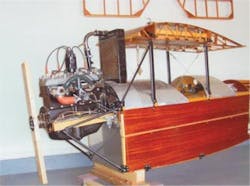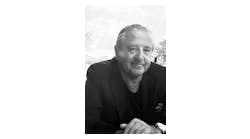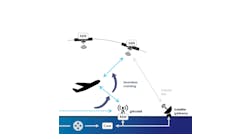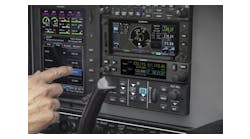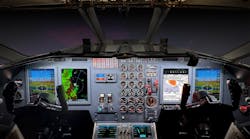“[In 1929 Modern Mechanics] wrote an article that a Model A Ford auto engine couldn’t be flown! I wrote them back and said that was a bunch of baloney . . . they can fly . . .”
— Bernard Harold Pietenpol, Interview 1976
Early in 1929, Bernard Pietenpol was a happy man. He had what few people, rich or poor, attain in life. He lived in a small southeastern Minnesota town he loved and did not intend to leave, and he possessed the mechanical skills to support his family during the hardships of the Great Depression. Best of all, Pietenpol had a hobby which made his heart soar. Using surplus automobile and aircraft parts, he managed to build an airplane which he flew every Sunday afternoon. A simple man, he had a simple name for his airplane. He called it “The Two-Place.” It wasn’t his first airplane but it was the one which would thereafter make him famous as the “father of homebuilt aircraft.” It wasn’t called “The Two-Place” for very long. And his “hobby” became a business.
The challenge
Not far away in Minneapolis, the editor of Modern Mechanics and Inventions magazine, Westy Farmer, encouraged his readers to buy manuals for homebuilt aircraft like the Heath Parasol. Infused with a passion for aviation, and a flare for the dramatic, he penned an editorial on powerplants, flatly stating, “No auto engine can be converted to flight. They are too heavy.” Bernard Harold Pietenpol knew better and soon proved it to Farmer — and the world.
Born on Feb. 19, 1901 near Cherry Grove, MN, Pietenpol was the son of a Dutch émigré farmer. He lived most of his life in the agrarian community, but Pietenpol was better at repairing a tractor than using one in the fields. Like so many rural children during those years he attended grammar school but probably didn’t finish high school. Between 1901 and 1918, America had begun to exchange horse-drawn vehicles and equipment for mechanical marvels like the Model T Ford, motorcycles, trucks, and tractors. And the “Golden Age” of aviation had arrived. Small town Cherry Grove had a grocery store owned by Pietenpol’s parents, a lumber mill and a blacksmith shop, but was not yet on the electrical power grid, relying on individual generators.
In 1920 Pietenpol married his partner for life, Edna. The enterprising young Pietenpol became an automobile mechanic, converting his parent’s barn into a garage where he serviced Fords and farm equipment, and became the town “handyman.” Anything with an engine came to Pietenpol for repair. His family describes him as a “self-taught engineer,” machinist, and inventor who designed everything from radios to wheelchairs.
His neighbor and life-long friend Orrin Hoopman recalled that once an automobile was pulled up to the garage by a team of horses “Bernard would get them [cars] going no matter what shape they were in,” and the owner soon drove it home.
When the first barnstormers buzzed the dairy barns, cornfields, and cherry orchards of southern Minnesota, it lit a fire within the hearts and souls of three neighborhood boys: Bernard Pietenpol, Donald Finke, and Orrin Hoopman.
It was an era of meager subsistence and great sacrifice, yet these three men found spare parts, built or machined what they could not buy, and for almost 10 years experimented with ineffective motorcycle, aircraft, and automobile engines for their homebuilt airplane. During this time, Pietenpol had flown a Curtiss Jenny and other airplanes, which he did not like, and became a good pilot. His first successful design in 1928 used a four-cylinder, 30-hp ACE engine, which was a conversion of a Model T engine.
“If the Shakers had built airplanes, they would have built them like Pietenpol. The sparse design features a church-pew style seat with no seatbelt.”
— Rochester Post Bulletin, Nov. 19, 1990
Satisfied with his monoplane’s plywood and spruce fuselage, Pietenpol sought to improve the engine power. Nothing got the boys safely in the air until Ford produced the Model A in 1929. The 40-hp Model A engine had twice the power of a Model T and Pietenpol immediately converted it for his aircraft. He mounted the engine and Model T radiator on his 18-foot wooden frame sporting a war surplus Lawrance propeller. The instrument panel included a throttle, airspeed indicator, tachometer, and height meter (altimeter), a magneto switch, and oil and water temperature gauges. The wings were 29 feet across, covered with varnished bed sheet fabric. The plane sat 6 feet off the ground, with the tail-dragging skid made from part of a Ford spring leaf. The 10-gallon gas tank used a cap from a Model T radiator. No tail wheel.
No brakes. Pietenpol’s friend Eddie Sampson fondly recalled Pietenpol’s philosophy: “If you don’t put it on there, it won’t give you any trouble.”
“The Two-Place” taxied out on wire wheels for the first time on May 20, 1929. It soared effortlessly 500 feet above Cherry Grove at 70 mph. Once in the air Pietenpol was reluctant to come down. From then on Pietenpol and “The Two-Place” were well known in his home town but destined to remain obscure had it not been for the challenge set forth by Westy Farmer at Modern Mechanics.
A hobby becomes a business
During the spring of 1929, Pietenpol and his friend Don Finke had been flying their “Two-Place” airplanes “every place we wanted to,” including 250-mile round trips to Minneapolis. He wrote Farmer a letter that he and Finke would fly up and show him that automobile engines worked just fine on his airplanes.
On April 14, 1930, Farmer assembled dignitaries at Minneapolis Airport to welcome aircraft carrying Army brass, but soggy weather grounded the arrival of the big planes. Like the Titanic exactly 18 years prior, Farmer’s plan was sinking fast. Fortunately for all involved, Pietenpol and Finke (flying aircraft ID #626 and ID #77W respectively) effortlessly landed across the runway outside the perimeter fence, prompting Farmer’s curiosity. Dashing across the field in his car, Farmer quickly learned his challenge had been met. For his part, Pietenpol was surprised that his arrival drew a crowd and stammered his apologies thinking he had broken an airport regulation. “We flew up there like a couple of greenhorns,” Pietenpol remembered.
Seizing the opportune moment Farmer announced to the awaiting crowd that he had “organized” a demonstration by two local fliers in airplanes they had built using Model A engines. Pietenpol and Finke took to the sky, and landed amid applause, in front of the airport terminal. Aviators rushed the fliers, anxious for a chance to take up one of the little monoplanes. As promised, the press covered the entire event. Recalls Pietenpol, “We got our name in the paper and everything. We thought we was going to get pinched when we got caught. Boy, when they seen them airplanes they pushed them in the hangar and they got some copyrights on ‘em.”
True to his word, Farmer featured Pietenpol’s planes in Modern Mechanics magazine. Not surprisingly, Pietenpol didn’t even have a formal sketch much less shop-drawings for construction. Farmer and Hoopman took care of that and a full set of plans was ultimately sold through Modern Mechanics for $7.50. The simplicity of the design, the availability of post-war aircraft parts and used Ford engines caused immediate popularity for which Peitenpol was not prepared. With his rural mailbox full of orders, he quickly enlisted local help to manufacture parts. By 1932, Farmer’s advertising campaign featured photographs of “The Two-Place” seemingly resting in a field with airmen camped under its wing next to a cozy fire. Thereafter he named it the “Air Camper.” An entire airplane sold for $750.
Soon the small airplane, in the small town of Cherry Grove, became a thriving business.
There’s a plane in the church!
With the successful flight to Minneapolis followed by the marketing efforts of Modern Mechanics magazine, Pietenpol opened his aircraft factory in the largest abandoned building in town — the Lutheran church. Eventually he manufactured 24 “Air Campers” with minor modifications to his original plans. He also converted a modified Model T engine for another monoplane built for Hoopman, which he called the “Sky Scout.” The original Civil Aeronautics Administration regulations didn’t require licensing for homebuilts under certain conditions, but eventually, Pietenpol’s world expanded and he earned Flight Instructor, Airframe and Powerplant, Commercial Pilot, and Ground Instruction (Aircraft Engine) licenses. Requirements, restrictions, and regulations for aircraft changed through the years, but Pietenpol’s simple design did not.
The Pietenpol family points out that they haven’t changed the original 1934 “Air Camper” plans which they sell today. Chet Peek lives in Oklahoma and has been flying since 1939. He purchased an “Air Camper” kit in the 1950s which he did not begin to build until 2003. With renewed interest, he interviewed Pietenpol’s neighbors and family for his book, “The Pietenpol Story,” which was published in 2006. “He was a country boy and nothing he did was flashy,” says Peek, whose book is replete with drawing plans, parts lists, and conversion instructions representing more than 70 years of Pietenpol history. Having restored more than a dozen aircraft (all airworthy) it isn’t surprising that Peek is sticking to the original Pietenpol plans. “I’m using a Model A engine,” says Peek, “pretty much like he would.”
The “simple design”
Today there are Pietenpol clubs in the U.K. and all across the United States. Pietenpol’s garage is now listed on the National Register of Historic Places. Pietenpol’s grandson, Andrew still flies and sells “Air Campers” and assures potential buyers that plenty of Model A engines are available.
In 1960 when Chevrolet came out with the Corvair engine, Pietenpol used it to power his own “Air Camper,” with such success he called it “the smoothest engine I have ever flown.” Naturally many have since been built with equal satisfaction. “It’s a simple design,” says Peek. “You can put almost any kind of engine on the nose of his airframe . . . Ford A, Ford T, Ford V-8, Velie, Kinner, Lycoming, Franklin, and Continental — all with good results.”
A hangar designed and built by Pietenpol was disassembled and erected at Oshkosh, WI, for the Experimental Aircraft Association. Inside, an “Air Camper” is exhibited along with a lawn mower Pietenpol made using a washing machine engine during the 1930s. Bernard H. Pietenpol was posthumously inducted into the Minnesota Aviation Hall of Fame in 1991. The Fillmore County Historical Society in Fountain, near Cherry Grove, displays one of the original Pietenpol aircraft. In addition to his designs for homebuilt airplanes, he was an instructor for the pre-WWII Civilian Pilot Training program. He then returned to Cherry Grove to briefly run a fixed base operation at the small grass strip, and later sold and installed TVs. Pietenpol died in 1984 at the age of 83.
His admirers call him a “genius” and general aviation historians accept him as the “father of the homebuilt airplane.” But, Orrin Hoopman’s few words may best describe Bernard Harold Pietenpol. “He was a very kind and compassionate man . . . and a born mechanic.”
Giacinta Bradley Koontz is an aviation historian and author. She was the founder and director of the Portal of the Folded Wings Shrine to Aviation and Museum from 1995-2001 (the site of Charles Taylor’s grave in North Hollywood, CA). Giacinta holds a BA in anthropology with a minor in U.S. history and has given presentations on pioneer aviation since 1995. Most recently she has been awarded a partial grant from the Wolf Aviation Fund to write her second book, highlighting the life of Amelia Earhart’s mechanic, Ernest Eugene Tissot Sr.
